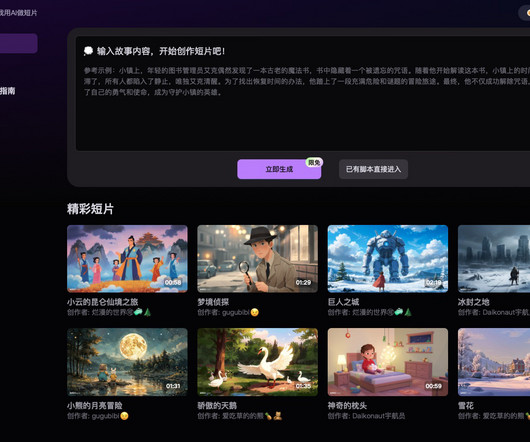AI-powered media editing app Descript lands fresh cash from OpenAI
TechCrunch
NOVEMBER 15, 2022
Descript , the audio and video editing platform founded in 2017 by former Groupon CEO Andrew Mason, has raised $50 million in a Series C round led by the OpenAI Startup Fund, a tranche through which OpenAI and its partners, including Microsoft, are investing in early-stage companies. Image Credits: Descript.













Let's personalize your content